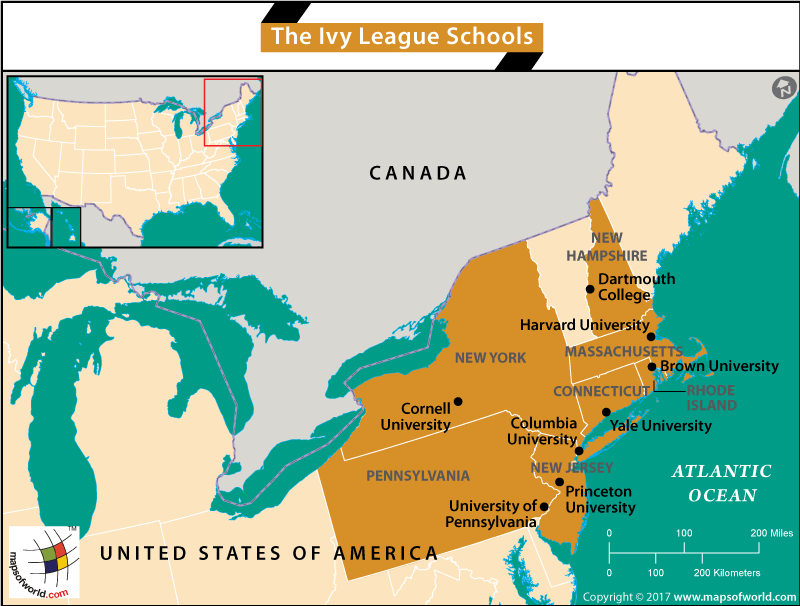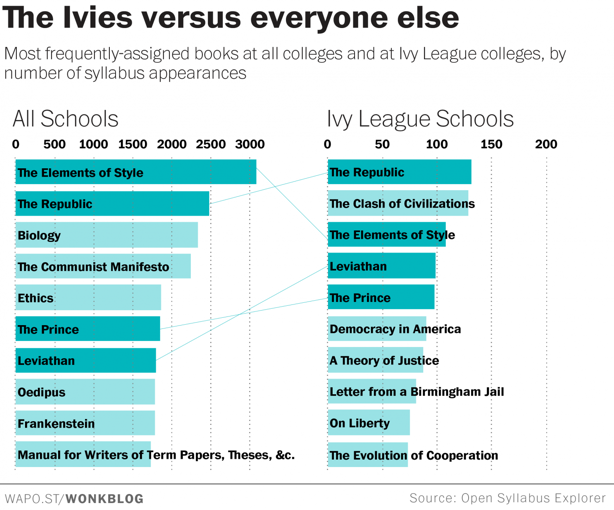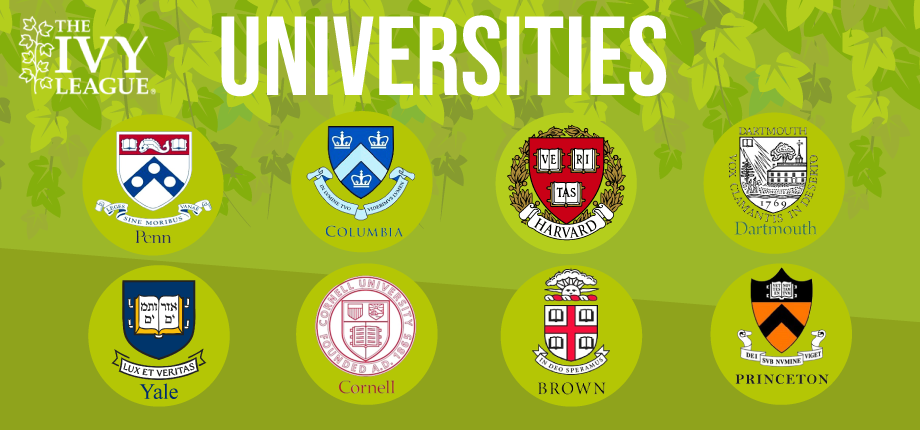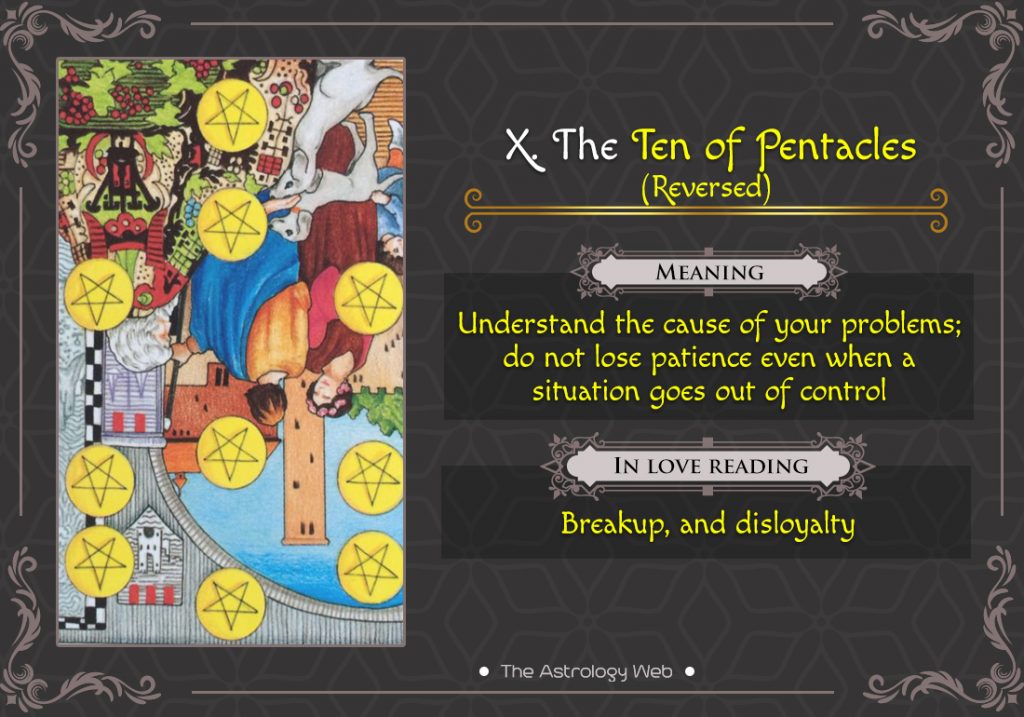As the smallest of the Ivy League schools, Dartmouth College enrolls just under 4,500 undergraduate students per year. Founded in 1769, the school is home to undergraduate schools of engineering, arts, and sciences as well as graduate programs in business, medicine, and engineering. Despite its impressive academic offerings, the school manages to maintain a quaint and intimate feel. The student to faculty ratio is just 7 to 1, meaning students have the potential to receive a fair amount of individualized instruction and one-on-one mentoring from professors.
Located in New York, New York, Columbia University is one of the oldest and most respected post-secondary academic institutions in the United States. Known for its excellent undergraduate programs in engineering and computer science, the school is also an active research hub that welcomes a diverse student body and faculty. In sharp contrast to some of the other Ivy League schools , Columbia University relies on a prescribed core curriculum as the basis for its undergraduate program. Regardless of major, all students accepted to the university must take a common set of classes. These classes are rooted in the liberal arts and emphasize oral and written expression. Even by the standards of large state schools, this institution is utterly massive with over 80,000 students, 20,000 faculty and staff, and 530,000 alumni around the world.
Students can choose from 215 graduate, 60 professional, and more than 700 undergraduate degree programs spread over three different campuses. The school has 44 libraries with over 21 million holdings, and an operating budget of $1.9 billion; it contributes $15.7 billion to the Canadian economy every year. Toronto has produced no fewer than 10 Nobel Prizes, including the first two from Canada. Given its immense size and resources coupled with the world-class intellects it attracts, it should come as no surprise that Toronto ranks second in North American publications and third in North American citations.
Its ample research leads to dozens of new patents every year and many new technological spin-offs. Princeton University is one of the oldest, most historic universities in the United States. Its famous Nassau Hall still bears a cannon ball scar from the 1777 Battle of Princeton, and its former president, John Witherspoon, was the only university president to sign the Declaration of Independence. The school's nearly three-century history has given it ample time to develop an impressive $18.2 billion endowment. But unlike the other big institutions it competes with, such as Yale, Harvard, and Stanford, Princeton spreads its considerable wealth across a far smaller number of students and programs. Princeton has no law school, medical school, business school, or divinity school.
Instead of developing professional programs, it has self-consciously evolved into a massive, research-driven think tank. Whereas other schools typically drive their elite faculty's attention towards graduate students, Princeton expects its professors to teach undergraduates, as well. Moreover, Princeton continues to challenge its students with a difficult grading scale, to a much greater degree than many other leading institutions.
Even brilliant valedictorians need to focus on their studies if they come here. Like Dartmouth, Princeton University emphasizes undergraduate education as their top priority. For liberal arts students or B.S.E. for students of engineering and applied science. Both programs feature general education requirements, as well as a focus on independent research. The required courses provide Princeton students with a diverse and thorough liberal arts education, a hallmark of the university's undergraduate experience.
Founded by Benjamin Franklin in 1740, the University of Pennsylvania has a long history of academic excellence. Today, the school continues to be ranked among the leading institutions of higher education in the country. It's not the school's reputation that attracts them to its campus for many UPenn students, though. Instead, students who enroll at the university find unparalleled opportunities for extracurricular involvement, social activism, and service-learning.
The strong sense of community at Penn translates to a tight-knit and active alumni network post-graduation. For many graduates, this influential network provides even more value than the degree itself and is worth the somewhat-pricey tuition many times over. Cornell University is not only one of the nation's prestigious Ivy League schools, but also the state of New York's land-grant institution. As such, the school is committed to enriching the lives of its students and contributing to the common good of its community, its state, and the world. Founded in 1865, the university is currently home to more than 15,000 undergraduate students. Though its founding mission is to provide quality education in all academic disciplines, the university is best known for its standout business programs and its undergraduate offerings in engineering and computer science.
As the fifth-oldest school in the United States and one of the colonial colleges, Columbia has a lot of history. That history has created an internationally recognized, elite university with a $10 billion endowment and a library with nearly 13 million volumes. This school, which once produced America's first MD, now graduates nearly 1,400 doctors per year from one of the world's most well-connected medical schools. Columbia is spread across five distinct campuses in the New York metropolitan area.
As the leading school in New York City, its students have numerous unique opportunities that only proximity to Wall Street, Broadway, the United Nations, and other epicenters of business, culture, and politics can bring. Columbia's ideal location simultaneously gives its students the chance to interact with various other respected institutions such as New York University. Ninety-six Columbians have won a Nobel Prize, making it third in the world in that coveted category (after Harvard and Cambridge University in the U.K.). Home to one of the best medical schools in the country, it offers interested students access to a variety of pre-med tracks and research opportunities. For those who don't want to become doctors, there are more than 80 other majors to choose from, plus the option to design an individualized study program. In terms of student life, the Midwestern school puts a heavy emphasis on community and leadership.
More than half the undergraduate population participates in public service projects, while leadership skills are taught through the LeaderShape Institute, an intensive interactive six-day retreat. Georgia Institute of Technology, often referred to as "Georgia Tech," is a located in Atlanta, Georgia. The school offers technology-focused education to more than 25,000 undergraduate and graduate students across six colleges and 28 schools focusing on business, computing, design, engineering, the liberal arts and sciences. The institution was founded in 1746, making it the fourth oldest university in the United States. It is a medium-sized institution with around 5,000 undergraduate enrollments, and like Harvard, has an extremely competitive acceptance rate of only 5%.
Some of its most popular degrees include computer engineering, public policy analysis, and economics. It is rated #2 of the best colleges in America to study political science and public policy analysis. SAT grades range from 1440 to 1570 and ACT grades range between 32 and 35.
The third-oldest institution of higher learning in the United States, Yale University, is home to many of the same top-rated academic and professional programs that the other seven Ivies offer. In addition, though, Yale is well-known for its visual and performing arts programs. Another standout feature of this particular Ivy League school is its residential college network. Upon admission, all undergraduate schools are assigned to one of over a dozen residential colleges within the university system, granting them access to a tight-knit academic community within the bigger Yale experience. What used to be a last resort for students who were underqualified for the Ivies is now just as competitive and at the top of many a college wish list. Its location in the heart of Music City is part of the appeal, but so are the academics and campus life.
Undergraduate research opportunities are plentiful, and they're integrated into every field of study, and the university is currently pending more than $600 million to convert its dorms into LEED-certified residential colleges. According to the Princeton Review, Vanderbilt also has the happiest students. Although Cornell University has the highest acceptance rates of all Ivy League schools, this does not mean that it's an easy school to get into. To be a competitive applicant for any of these eight prestigious institutions, you cannot slack off when it comes to your applications.
Start planning your acceptance strategies early, which means studying hard at school and planning ahead for your standardized tests. If you have not been involved in an extracurricular activity since childhood, plan to seriously commit to an activity as early as you can. Choose something you love to do as this will be evident in your application components. Most importantly, do not choose to go to an Ivy League school for appearances. Choose a program you actually want to attend and graduate from, rather than a program that will look good on your CV.
Prestige and social status do not necessarily translate into better educational fit for you. Choose happiness and invest in your education in a school you truly want to attend. News has ranked Babson the number one undergraduate school for entrepreneurship. All first-year students take "Foundations of Management and Entrepreneurship," in which they are given startup money to create, launch, and manage their own companies.
In business administration is the only degree granted, but students can choose from 27 concentrations on which to focus their study. Plus, traditional liberal arts courses are incorporated into the curriculum, for a well-rounded education. At the undergraduate level, the school offers joint degree programs that allow college students to earn a business or management degree plus a second degree in either nursing, engineering, or liberal arts disciplines.
As late as the 1960s many of the Ivy League universities' undergraduate programs remained open only to men, with Cornell the only one to have been coeducational from its founding and Columbia being the last to become coeducational. Before they became coeducational, many of the Ivy schools maintained extensive social ties with nearby Seven Sisters women's colleges, including weekend visits, dances and parties inviting Ivy and Seven Sisters students to mingle. This was the case not only at Barnard College and Radcliffe College, which are adjacent to Columbia and Harvard, but at more distant institutions as well. The movie Animal House includes a satiric version of the formerly common visits by Dartmouth men to Massachusetts to meet Smith and Mount Holyoke women, a drive of more than two hours. The University of Pennsylvania is another of the few pre-revolutionary American universities. It has a slightly higher acceptance rate than schools like Columbia, Harvard, and Yale, and is probably most well known for its medical school.
The youngest Ivy League school, Cornell University, was founded in 1865 by Ezra Cornell and Andrew Dickson White. With the mission of instructing any student on any subject of study, Cornell offers an opportunity for students to produce creative work while promoting inquiry across a broad spectrum. The undergraduate colleges of Cornell admit their students and provide their faculty. The largest undergraduate colleges are the College of Arts and Sciences and the College of Agriculture and Life Sciences. Though Cornell is known for all of its graduate schools, perhaps the most well-known is its top-ranked college Cornell SC Johnson College of Business and Weill Cornel Medical College.
Other top-ranked graduate colleges are the School of Veterinary Medicine and Hotel Administration. Texas is one of the fastest-growing regions in the US with an ever -increasing population and business potential. The University of Texas at Austin has become the flagship university of the larger, state-wide University of Texas System, which contains nine universities and six medical schools. Its endowment is $3.7 billion, and its research allowance approaches $700 million. Moreover, the university, which is affiliated with nine Nobel Prize winners, runs the McDonald Observatory.
The school's faculty have also earned honors such as the Pulitzer Prize, the Wolf Prize, and the National Medal of Science. The University of Texas is very successful in the athletic arena, as well, where it competes within the well-known Big 12 Conference. Here, 51,000 students and 24,000 faculty and staff pursue the love of learning.
Harvard University is the standard by which all other research universities are measured. No school in recent history has challenged its position as the world's premier academic institution. It is the oldest school in the world's richest nation, and has capitalized on the benefits this grants. Under financial guru Jack Meyer's management, the school's endowment grew from $4.6 billion to $25.8 in 15 years.
Today, the school possesses over $35.7 billion and its fortune is still growing. The school has produced 49 Nobel laureates, 32 heads of state, and 48 Pulitzer Prize winners. It boasts the largest academic library in the world, leading medical, law, and business schools, and an alumni network integrated across the globe. Not only is Harvard dominant across a broad spectrum of fields, it is also ideally situated to work alongside a variety of other schools. This equips both students and faculty with endless opportunities for collaborative research. Leadership is at the core of the educational experience at this liberal arts college, which has produced VIPs like former AOL CEO Steve Case, legendary composer Stephen Sondheim, and Morning Joe co-host Mika Brzezinski.
Since 1997, leadership studies has even been offered as its own concentration, blending political science, anthropology, and history. Because Swarthmore is part of the Quaker Consortium, students can cross-register at Penn, Bryn Mawr, and Haverford. So even though undergraduate enrollment is around 1,600, there are more than 600 courses to choose from, including an engineering program that grants a B.S. Another unusual aspect is the honors program, which lets students design their own courses of study, work in very small seminars, and fulfill requirements by taking exams conducted by outside experts.
Yale offers a wide variety of academic programs but is best known for its social sciences, cultural studies, drama, and music programs. Yale encourages its students to explore different fields of academics so that they leave the school more well-rounded and knowledgeable in more than just one field of study. This school strives to create a community for its students so that they feel welcome and at home when they are on campus. Harvard is best known for their highly ranked law school, but they also offer a variety of other academic units including medical school, design school, and business school.
Between its rich history, highly esteemed academic programs, and beautiful tree-lined campus, Harvard is an excellent choice to receive your higher education at. I created a table with each school's ranking, location, and undergraduate enrollment. The average ranking is based on counting the school's US News ranking twice.
You can click on each school's link to see the average high school GPA of admitted applicants, its standardized test scores, and its acceptance rate. Harvard's John A. Paulson School of Engineering is world-renowned for providing incredibly detailed degrees in six undergraduate engineering programs, and seven graduate options. They also offer two professional engineering programs in business analytics and artificial intelligence.
Throughout its nearly 400-year history, Harvard has been at the forefront of scientific research, and it has a well-funded engineering school allowing students to participate in new and groundbreaking science. Harvard is the oldest of the Ivy League schools and the oldest of any college or university in the United States. Founded in 1636, Harvard University has provided a world-class education to its students for nearly 385 years.
One of the larger Ivies, Harvard enrolls over 30,000 undergraduate and graduate students annually. Its large faculty enables the school to maintain a low student to faculty ratio of just 7 to 1. Perhaps because it has been around for so long, Harvard has the most name recognition of any of the Ivies, which is a big draw for many students. Having a degree of any kind from Harvard will open many doors of opportunity that may have been shut otherwise.
Founded in 1701, Yale University is home to not only the top-ranked law school but the highly regarded Yale School of Drama as well. Other unique programs offered at Yale include the Betty and Whitney MacMillan Center for International and Area Studies where students are educated on international affairs, cultures, and societies around the world. Yale also offers 12 professional schools including schools of law, medicine, management, art, and nursing. Yale was also the first institution in the country to award doctoral degrees to students. As the only Ivy League founded in part by Benjamin Franklin, University of Pennsylvania was founded in 1740. Another distinguishing item that sets U Penn apart from the other Ivy Leagues is that it has the highest international student enrollment with students hailing from more than 100 countries.




















































